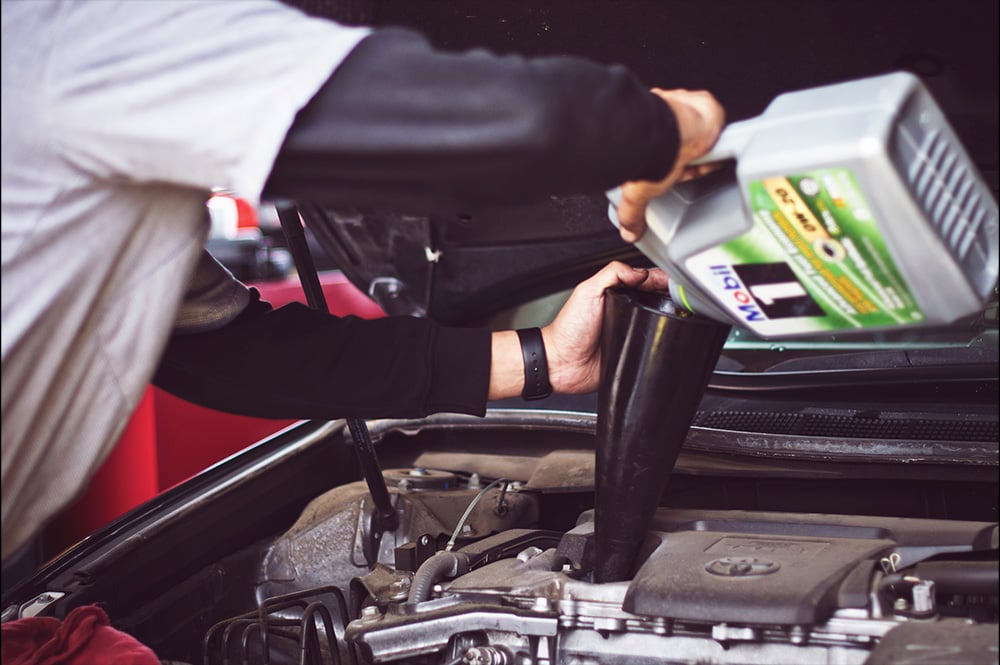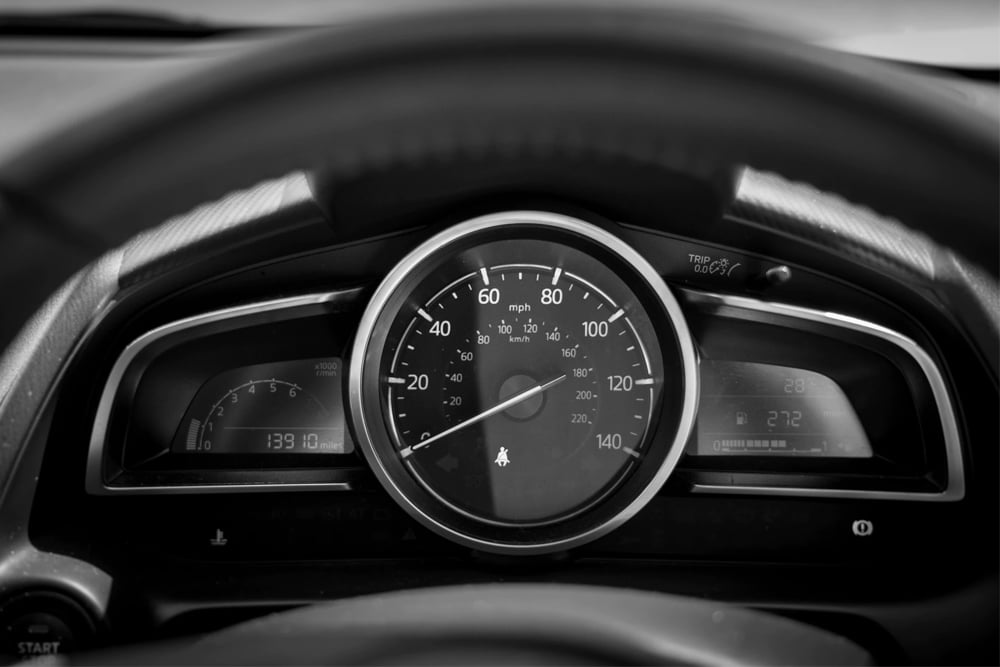MOT history – What can a thorough MOT history tell about your car


Cars over 3 years old pass a monthly MOT test to show they are roadworthy by law. We are here to explain MOT history and what a thorough MOT history tells us about your car.
You must do an MOT check every year but the MOT history test is incredibly useful. Doing an MOT history check keeps both you and your car safe. The periodic MOT test is one of the most important factors to make sure your vehicle is safe to drive. An MOT check contributes to your overall security and is a must by law. When you are buying a used car an MOT history check record is a very important piece of information. Checking whether the vehicle has constantly passed its MOT history checks will help you make the right decision. Some buyers trust a test drive and MOT checks alone. Trusting MOT history check alone may be a mistake but an MOT history can tell you quite a lot about the quality of the car and everything you need to know. The topmost thing about the government’s MOT history website is that it allows you to view every single test and the reasons why a car didn’t pass. Simply visit the website of the MOT check service and enter the registration number of the car which you need to buy.
You have to provide the registration number for the MOT history search. As mentioned above an MOT history check record consists of the following:
The mechanic will also make a note of smaller defects, although it does not need a repair.
That’s a lot of useful data you are getting from the MOT history check. Run our Motorscan MOT history check and avail the benefit of MOT records which are 100 percent reliable. One of the greatest benefits of the MOT history check is that it is one of the few effective tools against the clock. According to the research data in 2017, one in sixteen cars was clocked. We should be aware that we are facing a clocking crisis nationally that shows no signs of getting out of this crisis soon. With old, analog models, any tampering would usually leave visible marks. By thoroughly inspecting the dashboard, you would often be able to detect clocking even without expert experience. With a cheap hardware device, you can change the reading of a digital odometer. Garages legally use these to adjust the car from kilometres to miles.
The MOT history check can provide vitally helpful information here. With each MOT inspection, the mechanic registers the mileage. In this way, you can verify the current mileage of a car precisely.
An MOT test does not take so long. The test takes around 45m to an hour, and some possessors choose to stay while the vehicle is being inspected. If repairs are needed following the test the process will take longer. During the test, the ensuing areas are inspected.
VIN and registration plate – The tester will check that your vehicle identification number and registration plate are where they should be. They will also check that everything is genuine and correct.
Lights – Checks whether the lights are performing and are bright enough. Checks whether the headlights are pointing in the right direction. All these will be checked for an MOT check.
Steering and suspension – In every test, this is one of the main checks done. The MOT mechanics verify if the steering and suspension are working correctly and are fit for driving.
Safety- During each MOT test, a few aspects of traffic safety are checked. These cover windscreen wipers, safety belts, seats, and horns.
Emission levels– The car must be up to current emigration norms. One reason is, obviously, the environment. The other is to make certain you are paying the right amount of taxes.
Vehicle structure and stability- The MOT verifies aspects of a vehicle’s structural integrity. This ranges from the bodywork and the doors to the tires and brakes.
A Mot history check is more comprehensive.
Cars that are 40 years old or more have exemptions; the vehicle has had substantial changes.
If you own a car it is your responsibility to ensure that the MOT on your car is valid and up to date. If you don’t have an MOT certificate your insurance can be invalidated. Not having a valid MOT certificate is illegal (Section 47 of Road Traffic Act) and you could face a £1,000 fine and receive 6 to 8 points on your licence by driving without a valid MOT. At the time of the MOT test, every car must meet the minimum legal requirements. To ensure safety the MOT test will check all the important components and items on your car. You must understand what the MOT certificate means. The MOT certificate does not guarantee the overall mechanical condition of a vehicle. An MOT certificate gives an assurance that at the time of the test the minimum acceptable environmental and road safety standard required by law was met by your car without the need for dismantling your vehicle. The MOT certificate cannot be considered as a substitute for regular maintenance. The condition of the engine, clutch, or gearbox is not covered during the test.
Before it was not complicated you either had to fix a fault or you did not have to take any action at all. This was a simple concept to grasp. But it also meant that in most cases, minor defects were never actually fixed, because no one is compelling you to do so. Today, there are four categories. Each fault falls into one of them and will require a different set of actions.
Your car may pass its MOT but with a minor fault. These indicate issues with the vehicle that have not been supposed to be serious enough for it to fail but will need addressing shortly.
Think of them as warnings. Although your car has been passed fit to drive, minor faults should not be ignored. Typical issues might be tyres that are getting close to having minimal tread depth and will need replacing soon, or brake pads showing signs of being worn. Still, there is a good chance your car may fail a forthcoming MOT test if minor faults are ignored. It may also affect the resale value as any buyer will be responsible for the need to make repairs.
The MOT history should be one part of estimating whether the car you are going to buy is suitable for you. Can you trust the MOT history records completely? The MOT history provides proof that the odometer has been tampered with, so don’t fix the deal. But in situations where there have been numerous serious issues with the car you should not buy such a vehicle. The MOT isn’t comprehensive in any way and not a true value statement about the car; still you can know how well the former keeper has treated the vehicle. At the same time, a long list of minor faults need not be an issue. Occasionally, a single visit to your garage can take care of them and get you a great deal. In the end, only a mechanic will tell you more about the car after inspection.
An MOT check will, first of all, reveal how frequently a particular car has passed or failed the examination. This information tells you quite a bit about how well the vehicle has been maintained. Frequent fails need not be a major issue as long as the car is in a good condition. Some of the most typical reasons for not passing your MOT include a failure to clean up waste near the pedals, or defective windscreen wipers. Neither of these is entirely inapplicable. But none of them can be considered as a reason not to buy a car. But if a former owner can simply not feel to get it right at the first or second try, it does make you wonder. Indeed more so, if the reasons for not passing are more serious.
An MOT check is a periodic test for your car. It’s valid for twelve months and can be renewed up to a month before it expires. It substantially serves to check two important areas: whether your engine is safe and whether it meets environmental norms. An MOT generally takes between an hour to forty-five minutes. You will frequently have to have the car checked while you want to keep your car legal on roads. Still, if the mechanic detects serious issues, then the car has to be repaired. Depending on the depth of those issues, you may need to find another car. Now you understand how The MOT history check is great. But it can no way tell you everything you need to know. MOT history checks are incredibly beneficial. Since an MOT history check can warn you of minor or major dangers for your safety. As a buyer, the free MOT history check gives an insight into possible sins and issues the vehicle may have. An MOT record gives essential information for buyers. If you are looking to buy a second-hand car MOT history check can indicate how frequently the car has failed an MOT in history, what the reasons for failing were and how committed the former keeper was to fix it again. It can therefore contribute to your decision whether or not to buy the vehicle. Thus an MOT history check can discover quite a lot. You must collect all the necessary data through an MOT check without fail before buying a car.


